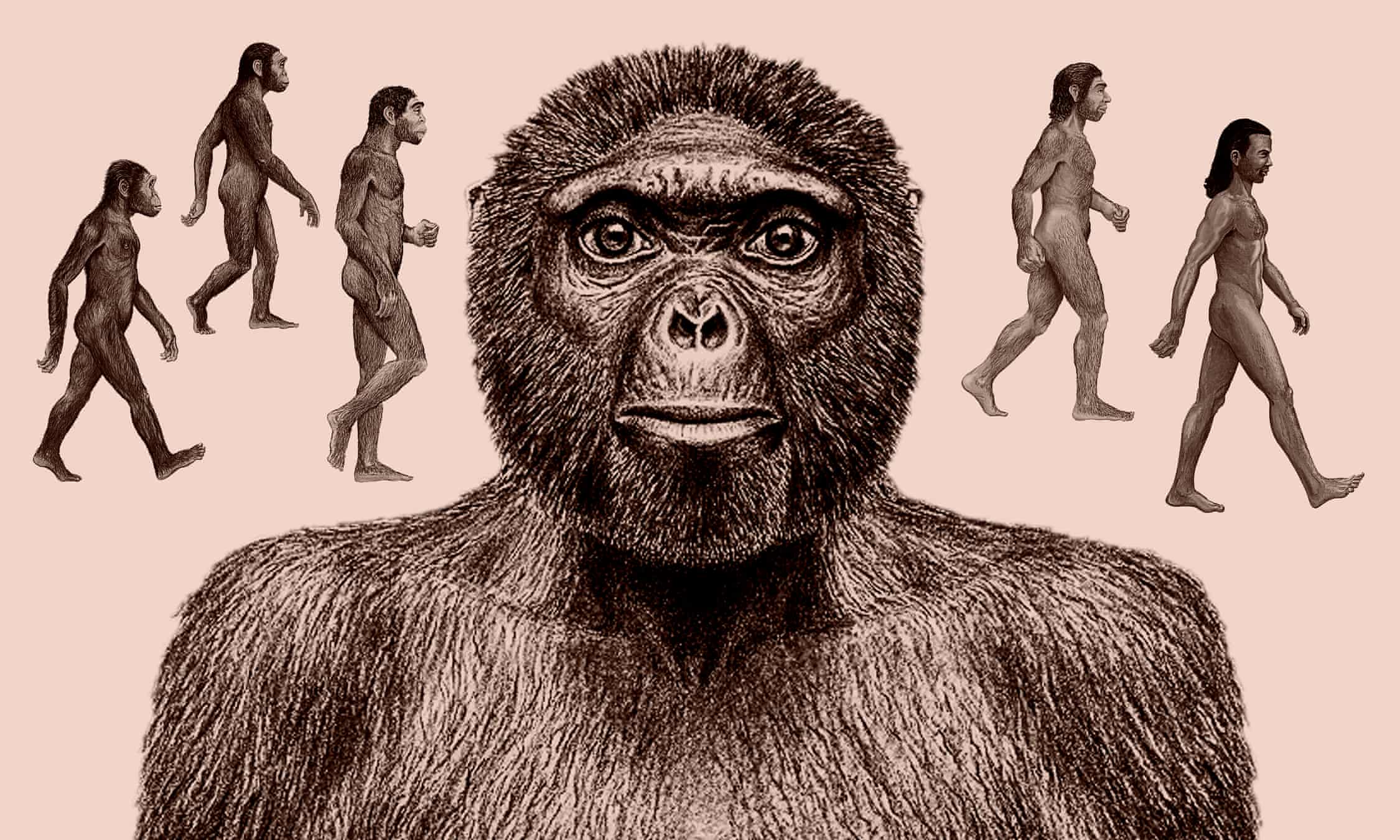by HANNAH DEVLIN
 Our ancestry is still not entirely clear, although there is strong evidence for specimens such as Ardipithecus ramidus, centre, being a direct ancestor or very close to our lineage. ILLUSTRATION/Getty, Guardian Design Team
Our ancestry is still not entirely clear, although there is strong evidence for specimens such as Ardipithecus ramidus, centre, being a direct ancestor or very close to our lineage. ILLUSTRATION/Getty, Guardian Design Team
The path from ape to modern human is not a linear one. Hannah Devlin looks at what we know – and what might be next for our species
Let’s go back to the beginning. When did we and our ape cousins part ways?
Scientists are still working on an exact date – or even a date to within a million years. Like many of the big questions in human evolution, the answer itself has evolved over the past few decades as new discoveries, techniques and technology have provided fresh insights.
Genetics has proved one of the most powerful tools for time-stamping the split with our closest living relative, the chimpanzee. When our complete genomes were compared in 2005, the two species were found to share 98% of their DNA. The differences hold important clues to how long our lineages have been diverging. By estimating the rate at which new genetic mutations are acquired over generations, scientists can use the genetic differences as a “molecular clock” to give a rough idea of when the split occurred. Most calculations suggest it was between four to eight million years ago.
This time window is more recent than was originally thought. In the 1960s, fossil evidence led palaeontologists to conclude that a 14m-year-old ape, Ramapithecus, was the earliest ancestor on the human line, based on the shape of its jaw. Subsequent DNA analysis has revealed the split occurred long after that – Ramapithecus is now considered an orangutan ancestor.
We share 98% of our DNA with chimpanzees.
So are scientists still looking for the “missing link” between us and other ape species?
We still don’t know the identity of our most recent common ancestors with chimpanzees. But scientists tend to dislike the phrase “missing link”, as it implies that evolution proceeds in an orderly, linear fashion with well-defined junctures.
“It gives the sense that there is a single transitional form that magically bridges the gap between a living ape and a living human and suggests we’ve got to fit everything into our line of evolution,” says Chris Stringer, head of human origins at the Natural History Museum.
The reality is messier: different branches evolve at different rates; new traits can emerge several times independently; splits can be dragged out over millennia and across continents, with populations diverging and then interbreeding again. Rather than the tree of life it’s more like a dense, thorny bush.
But can we assume that our last shared ancestor with other living apes was something like a chimp?
Not necessarily – chimps are not simply unevolved versions of us. Our hypothetical common ancestor would have had a mixture of chimp-like traits, human-like traits and primitive traits that both species eventually left behind. The common ancestor might have walked on all fours, or might have been more upright.
Scientists are still trying to piece together this evolutionary jigsaw puzzle based on a shifting cast of creatures that show up in the fossil record. To complicate things, most of the fossils found probably represent evolutionary side-branches rather than direct ancestors.
The Guardian for more
